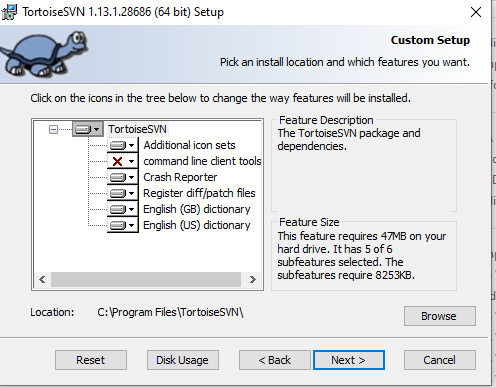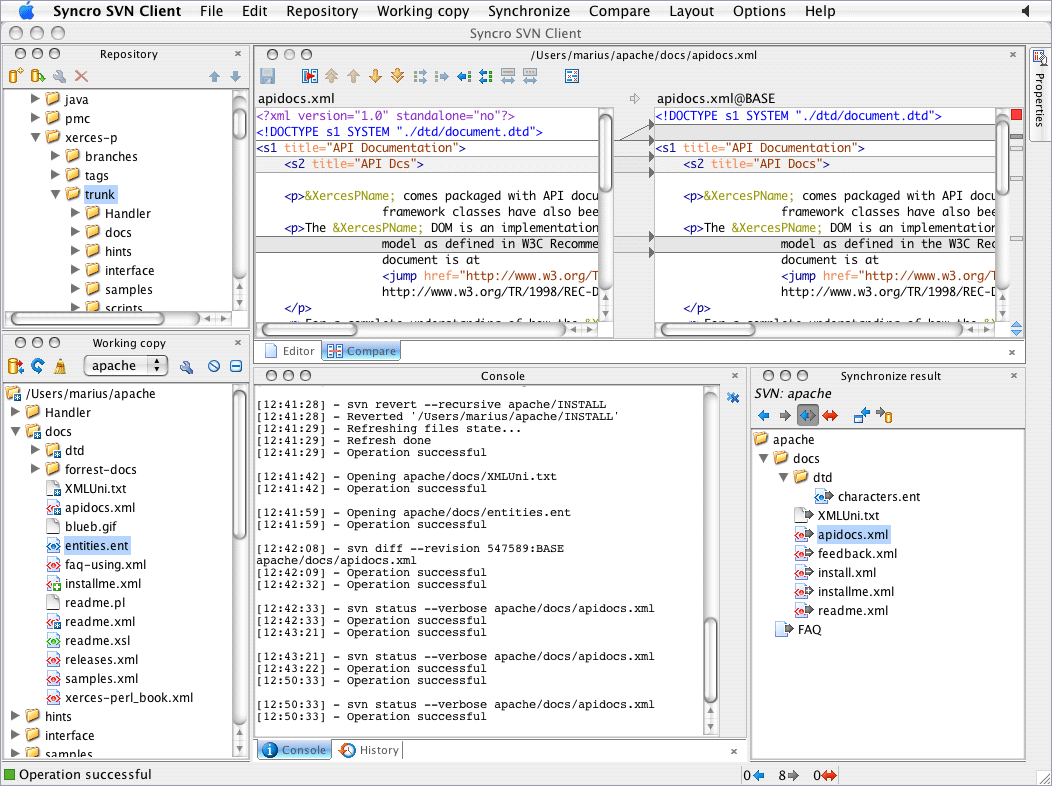

- #Install svn client how to
- #Install svn client Patch
- #Install svn client code
- #Install svn client windows
When the branch code fix is complete, the branch is copied from project-A/branches/1.0.1-SNAPSHOT to a project-A/tags/1.0.1 tag. The SNAPSHOT designation is a Maven device indicating a version that is not yet released, as shown in the following figure.ĭescription of the illustration maven_dt_005.png To address the problem, the project-A/tags/1.0 tag is copied, using the svn copy command, to project-A/branches/1.0.1-SNAPSHOT.
#Install svn client Patch
A problem is discovered in version 1.0 that requires a patch release. The three previous releases of Project-A are 1.0, 1.1, and 2.0. The current version developing under the trunk directory is version 2.1. In Project-A, the main code line is managed under project-A/trunk. This Project-A example outlines the general workflow for patch management of source code: When changes are complete, the new release is made from the branch and a corresponding tag is created. After a copy of the tag is made under the branches directory, you can check out the code and modify it as necessary. A branch is a copy of a location elsewhere in the repository and does not differ in composition from a tag. If a patch or subsequent change of a tag is considered necessary, then you must create a branch. Another importance of a release tag is to facilitate investigation regarding issues in the associated release. In the preceding example, 3.0.5 indicates the release version to which this tag corresponds.Ī tag is important for future work that might be necessary for patch creation or bug-fix releases. Subversion copy operations are not expensive in terms of storage because the server tracks changes internally. When a release is made, the current trunk source is copied into the tags directory, to a tag corresponding to the release.


The typical repository layout should resemble the following figure:ĭescription of the illustration maven_dt_008.pngĭevelopment of the main code line occurs in the trunk directories.
#Install svn client windows
svn+ssh might not be available on Windows by default.Īlthough Subversion does not require any particular subdirectory structure within a repository, it is a good idea to follow an established convention, as this book does.
#Install svn client how to
Refer to the Subversion documentation for information on how to configure other protocols. Svn ls addition to svn+ssh, there are several other protocols that are supported by Subversion. Now that you have created a repository, you can use the Subversion client to perform standard operations against the new repository by using the following base URL: You can modify this in the REPOS_PATH /conf/nf file. This means that anyone with SSH access, regardless of repository permissions settings, can check out repository files. Ensure that user and group permissions for all files in the new repository reflect the type of access control that you want to have over the repository contents.īy default, anonymous, read-only access is enabled for a new repository. Svnadmin create C:\ciroot\subversion\repositoryĪccess to the repository is controlled by file permissions and the user referenced for accessing the repository through the SVN client. Svnadmin create /ciroot/subversion/repository In this command REPOS_PATH is the absolute path to the local file system. In this command, REPOS_PATH is the absolute path to the local file system.Ĭreate a repository on a given path by running the following command:

The command-line utility called svnadmin is the primary tool for server-side administrative operations.Ĭreate a directory for the repository by running the following command: After Subversion is installed, you must create a repository.


 0 kommentar(er)
0 kommentar(er)
